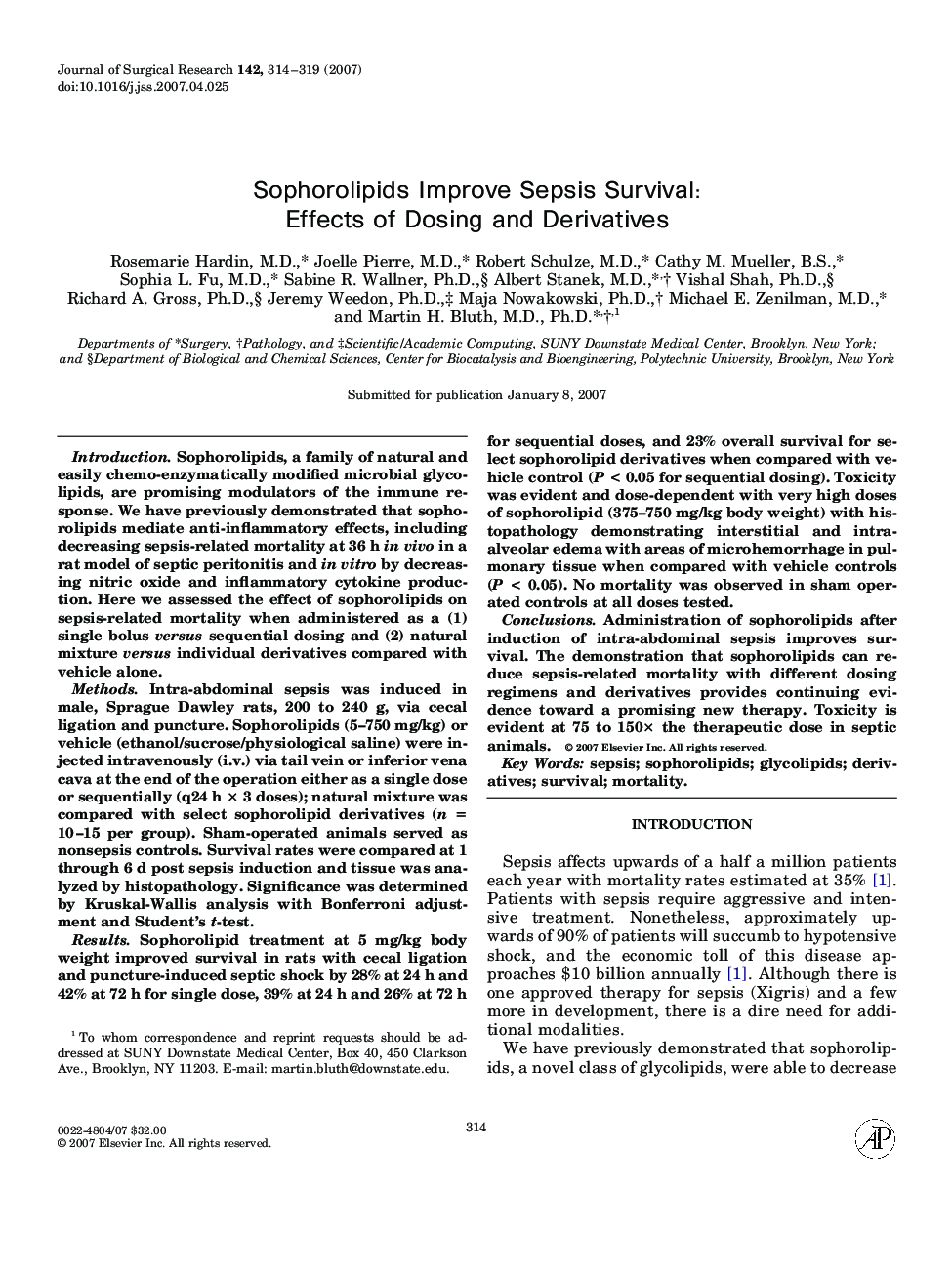| کد مقاله | کد نشریه | سال انتشار | مقاله انگلیسی | نسخه تمام متن |
|---|---|---|---|---|
| 4304688 | 1288511 | 2007 | 6 صفحه PDF | دانلود رایگان |

IntroductionSophorolipids, a family of natural and easily chemo-enzymatically modified microbial glycolipids, are promising modulators of the immune response. We have previously demonstrated that sophorolipids mediate anti-inflammatory effects, including decreasing sepsis-related mortality at 36 h in vivo in a rat model of septic peritonitis and in vitro by decreasing nitric oxide and inflammatory cytokine production. Here we assessed the effect of sophorolipids on sepsis-related mortality when administered as a (1) single bolus versus sequential dosing and (2) natural mixture versus individual derivatives compared with vehicle alone.MethodsIntra-abdominal sepsis was induced in male, Sprague Dawley rats, 200 to 240 g, via cecal ligation and puncture. Sophorolipids (5–750 mg/kg) or vehicle (ethanol/sucrose/physiological saline) were injected intravenously (i.v.) via tail vein or inferior vena cava at the end of the operation either as a single dose or sequentially (q24 h × 3 doses); natural mixture was compared with select sophorolipid derivatives (n = 10–15 per group). Sham-operated animals served as nonsepsis controls. Survival rates were compared at 1 through 6 d post sepsis induction and tissue was analyzed by histopathology. Significance was determined by Kruskal-Wallis analysis with Bonferroni adjustment and Student’s t-test.ResultsSophorolipid treatment at 5 mg/kg body weight improved survival in rats with cecal ligation and puncture-induced septic shock by 28% at 24 h and 42% at 72 h for single dose, 39% at 24 h and 26% at 72 h for sequential doses, and 23% overall survival for select sophorolipid derivatives when compared with vehicle control (P < 0.05 for sequential dosing). Toxicity was evident and dose-dependent with very high doses of sophorolipid (375–750 mg/kg body weight) with histopathology demonstrating interstitial and intra-alveolar edema with areas of microhemorrhage in pulmonary tissue when compared with vehicle controls (P < 0.05). No mortality was observed in sham operated controls at all doses tested.ConclusionsAdministration of sophorolipids after induction of intra-abdominal sepsis improves survival. The demonstration that sophorolipids can reduce sepsis-related mortality with different dosing regimens and derivatives provides continuing evidence toward a promising new therapy. Toxicity is evident at 75 to 150× the therapeutic dose in septic animals.
Journal: Journal of Surgical Research - Volume 142, Issue 2, October 2007, Pages 314–319